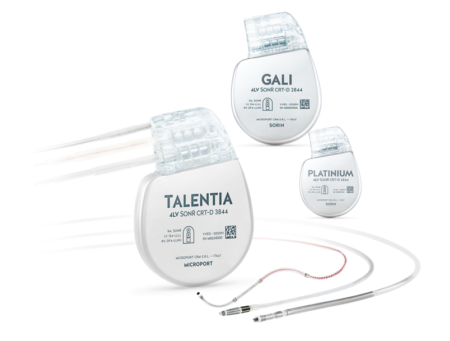SONR® CRT SYSTEM: A UNIQUE APPROACH TO AV/VV OPTIMIZATION
The SonR® CRT system, composed of the SonR® CRT-D + SonR® Tip Atrial Lead, is the first and only solution to use a cardiac contractility sensor embedded in an atrial lead to automate CRT optimization.
Paired with an advanced proprietary optimization algorithm, it enables personalized AV and VV interval adjustments based on real-time hemodynamic feedback, supporting improved response and long-term therapy performance.
- Continuous measurement of the heart's contractility allowing for automatic optimization of AV and VV intervals.
- Weekly optimization at rest and during exercise.
- 35% risk reduction in Heart Failure (HF) hospitalization.1

WHY SONR®?
Addressing variability in CRT response with automated, personalized therapy.
Despite advances in CRT, up to 30% of patients may not respond as expected.2 SonR® addresses this variability by:
- Continuously measuring cardiac contractility: Providing a direct, objective assessment of the heart's pumping performance.3
- Adapting AV and VV intervals weekly, at rest, and during activity: Ensuring therapy is consistently optimized, not just at implant, but dynamically at rest and during physical activity.
- Supporting effective CRT therapy in complex patient subgroups: Offering a tailored approach for those historically known for lower CRT response rates.1,4
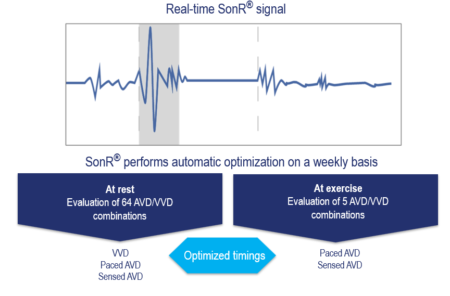
HOW IT WORKS: SONR® DELIVERS PERSONALIZED OPTIMIZATION
The power of SonR® lies in its unique two-part system, designed to provide continuous, adaptive therapy:
1. SonR® Tip Atrial Lead
At the core of the system, the SonR® sensor is embedded in the tip of the atrial lead. It detects vibrations from myocardial contractions, which correlate with LV dP/dt max, providing a reliable indicator for cardiac contractility.
- Over 99% implant success rate
- Proven handling and torque stability for effortless positioning
- Predictable and stable electrical performance over time
2. SonR® Optimization Algorithm
The SonR® CRT-D device uses the SonR® sensor input to automatically optimize AV and VV intervals weekly, at rest and during activity, without requiring echocardiographic input or in-clinic reprogramming.
This allows cardiac resynchronization therapy to be continuously adapted to each patient's individual needs, ensuring optimal filling time while preserving contraction effectiveness over time.7
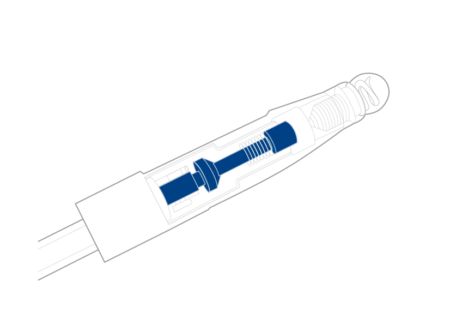
CLINICAL VALIDATION: RESPOND-CRT TRIAL
The effectiveness and safety of SonR®-guided CRT optimization have been rigorously validated in the RESPOND-CRT™ Trial1, a large, randomized, double-blind, multicenter, landmark study.
The trial successfully met its primary endpoint, demonstrating that automatic AV & VV optimization with SonR® technology is as safe and effective as AV and VV optimization using echocardiography.
- High Clinical Response: 75% clinical responder rate in the SonR® arm vs. 70% in control (p<0.001) at 12 months.1
- Non-Inferiority: Confirmed non-inferiority to echo-guided optimization for the primary endpoint.1
- Reduced Hospitalization Risk: 35% risk reduction in heart failure hospitalization compared to echo-optimized therapy1
- Proven successful implantation rate: 99.8% SonR® Tip implant success rate with freedom from complications: >98.5%1
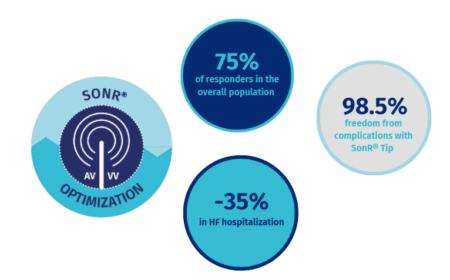
EFFECTIVE, EVEN IN PATIENTS WITH COMPLEX UNDERLYING CONDITIONS
Subgroup analysis from the RESPOND-CRT trial showed higher clinical response and reduced HF hospitalization risk in patients with high risk of non-response, including:
- Patients with atrial fibrillation history: -45% reduction in all-cause mortality or HF hospitalization1,4,5
- Patients with renal dysfunction: -52% reduction1,4,5
- Patients with LBBB and QRS <150ms: -38% reduction1,4,5
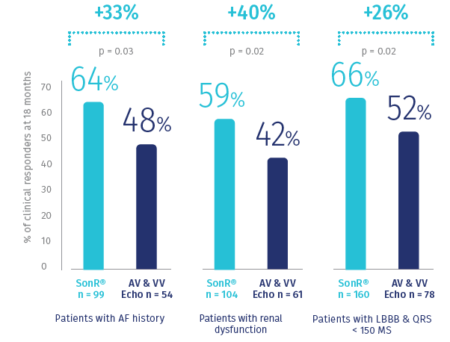
AVAILABLE SOLUTIONS
SonR® Optimization is available when connecting the SonR® Tip lead with:
